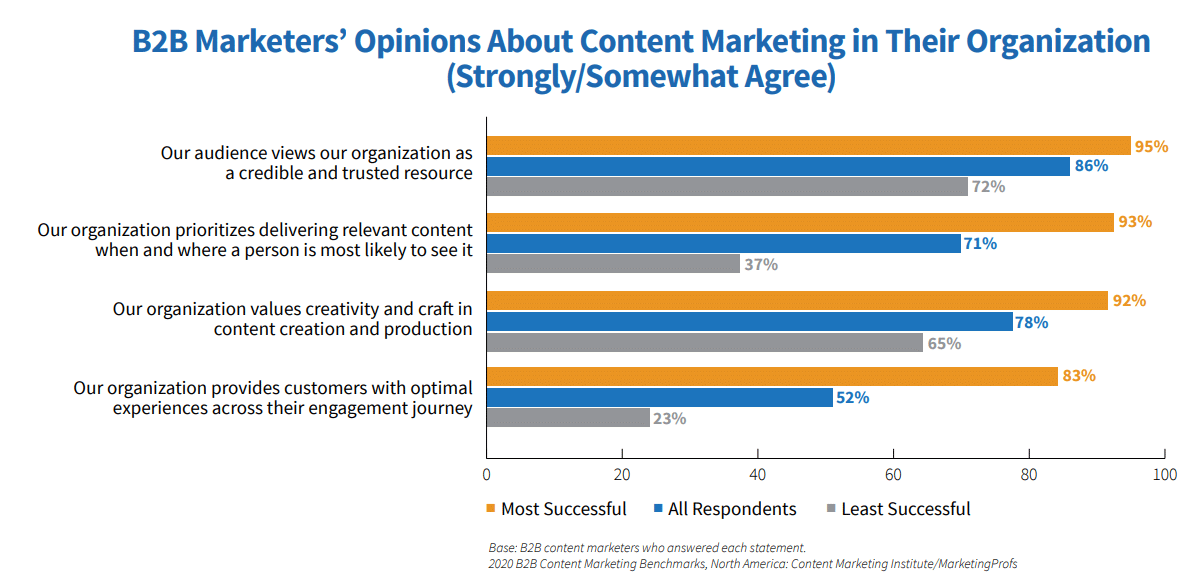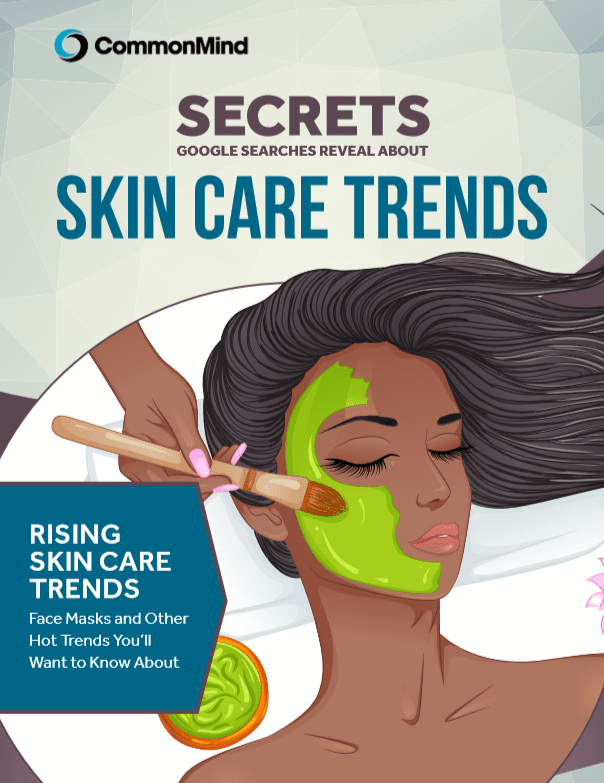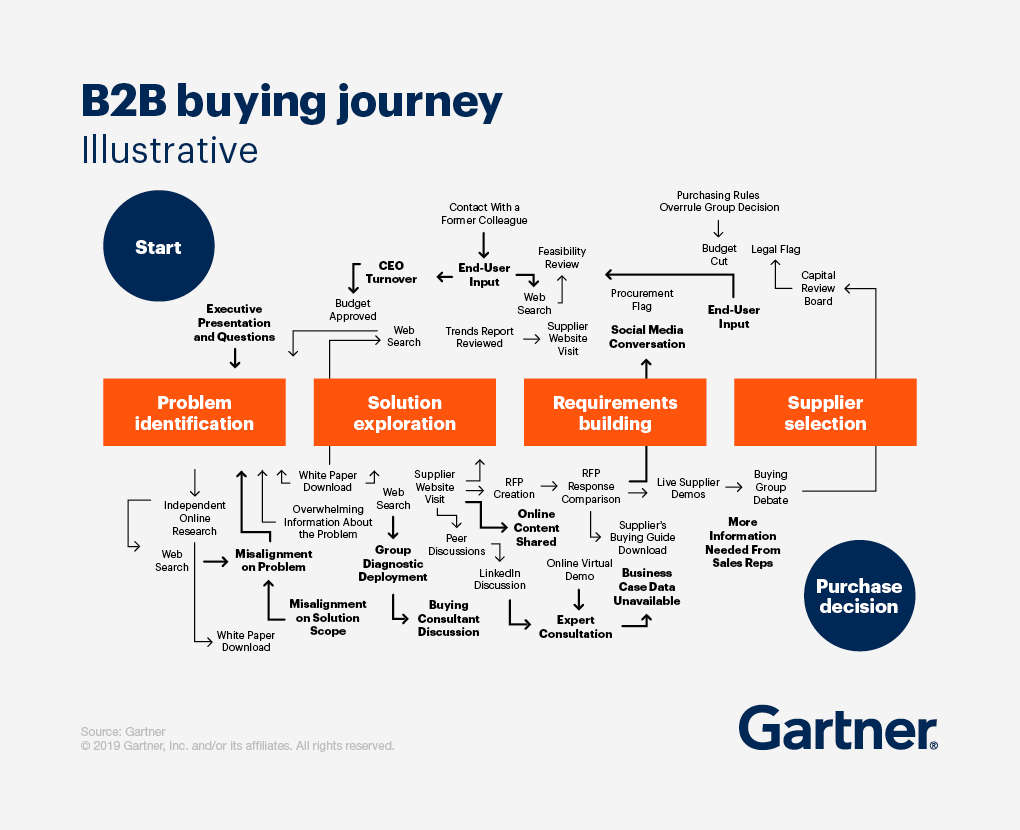The Importance of Content Ideation for B2B Marketers

For B2B marketers, great content is a key driver to generating inbound leads. It’s also the foundation for an account-based marketing approach because it can be tailored to suit the needs of buyers in specific industries throughout every stage of the B2B buying cycle.
In a 2019 survey of just under 700 B2B marketers by the Content Marketing Institute (CMI) and Marketing Profs, 52% of respondents felt their organization provided customers with optimal experiences across the engagement journey.

Ensuring that relevant, high quality content is available at every customer touchpoint across the entire buying journey is the best way to provide an optimal buying experience. But generating relevant content consistently can be challenging. It requires that businesses create a thoughtful content strategy that addresses a variety of content types aimed at meeting B2B buyers’ needs throughout their buying journey.
Content ideation for B2B marketers
Content ideation involves identifying and planning the most relevant topics for a given audience. While this process can be as simple as brainstorming ideas in a team meeting (or via email), ideally it will be tied to a specific strategy with pre-defined goals. To this end, it’s extremely helpful to tie content ideation to stages of the buying cycle as follows:
Awareness/education—As the widest part of the funnel, this content at this stage of the game will be the broadest. This is your blog content, your thought leadership articles, and your “how to” webinars and whitepapers. For example, at CommonMind we create in-depth guides which we feature on our website and blog like Our Skin Care Trends Report. The report summarizes 80-pages of results that Google published in 2017 based on their analysis of rising and falling searches in this category. We chose to summarize this report and turn our summary into an Infographic because health and beauty is a core industry that we serve.

Interest/Consideration
Content at this stage of the funnel should address a specific need or stakeholder. It should also be very solutions oriented.
Examples of content that fit within this category are:
- how-to blog posts
- videos
- worksheets
- infographics
- solution decks
- Q&A content (see below)
For prospects that are deep into the Consideration stage of the funnel, Q&A content that answers a specific question is a good fit (e.g., how do I integrate XYZ tool with my existing tech stack?)
Intent/Evaluation/Purchase
This is the lowest part of the funnel. By now, your prospects should know your name and have become somewhat familiar with the product or service you’re offering.
The content you produce for this stage of the funnel will be deliberate and targeted and will likely involve your sales team. Examples include:
- sales decks
- webinars
- highly specific blog posts (e.g., how healthcare systems benefit from eConsult platforms)
The funnel isn’t really a funnel
It’s important to keep in mind that the three stages of the B2B buying funnel, as noted above, aren’t linear. Also, while there may be three or four main buying stages, there are lots of pit stops within each stage.
B2B buyers move through the funnel as though it’s a maze, often doubling (or tripling) back to revisit content during each phase of the buying process. The following graphic from Gartner illustrates this concept:

Understanding the complex process that B2B buyers move through when selecting a new supplier will help inform your content ideas at every phase of the buyer’s journey.
This massive infographic by Digital Marketer provides a great starting point for brainstorming concrete ideas. While the title suggests the focus is blog posts, it can be adapted for all types of content. Here is a quick overview of content types (this list is a summary of what’s included in the infographic):
- Be useful—Lists, How-to posts, case studies, problem/solution posts, FAQs, and more fit within this category.
- Be human—Inspirational, holiday, behind the scenes, off-topic, rant, and home run posts (among others) fit within this category. This type of content is well-suited to social media and video content (e.g., a short 2 minute behind-the-scenes video of your factory staff at work.)
- Be generous—Industry expert, link roundup, quotes from those you admire, best of the web, pick of the week and more fit within this category. These posts help establish your industry niche while giving a nod to those you admire and can be extremely useful for demonstrating that you’re an industry thought leader.
- Be promotional—Feature comparisons, project showcases, income reports, company updates, presentations, best-of posts and other company-focused content fits within this category. This type of content helps prospects answer the question, “Why should I work with this company?” The content can be posted to your blog, published on your website as standalone content, or published externally (e.g., as a press release or case study).
- Be controversial—What if, debate, attack, prediction, and reaction posts are a great way to further demonstrate expertise while attracting traffic. A good rant is innately shareable (for example) and can help position you as an expert in your given field.
- Be entertaining—Review, survey, news, trends, issue, and takeaway posts are covered in this category. This type of content is helpful and can be powerful at any stage of the buying funnel. Like controversial posts, entertaining posts are helpful and, thus, shareable.
- Be engaging—Q&A, challenge, customer showcase, freebie/giveaway, and contest posts fit within this category. While some of this may not be appropriate for a B2B audience, engaging posts are a great way to help your audience feel heard and the end goal here should always be to make the buying process easier.
Content ideation is a team exercise
Getting feedback from all stakeholders is important during the ideation process—sales, marketing, leadership, customer service, creative, IT, and even your customers themselves can all fuel your repository of content ideas. It’s really important to involve sales and marketing teams in content creation so that your messaging is consistent.
Keep in mind that you’re not just selling to one person. Gartner reports that the average B2B buying team consists of six to ten decision makers, each of whom collect four to five pieces of content. This adds complexity to the buying process as buying groups meet to consider new solutions, vendors, and products.
The biggest driver of account growth, according to Gartner, is customer confidence in their decision-making. Good content helps inform and educate customers, but too much content can add confusion and complexity to the buying process. This is where a deliberate content ideation process can truly help because it has deliberate end goals—to inform without overwhelming, to answer customer questions without being overly promotional, and to establish your business as a solution to a specific problem.
Content ideation for B2B marketers, if applied strategically and with intention, can help you produce content that is meaningful and targeted, but it takes planning, foresight, and a team approach. All three of these things will ensure that you produce high quality content that reaches B2B buyers with relevant information, regardless of where they’re at on their buying journey.
***
Contact us to learn more about creating a comprehensive B2B content strategy. We’re happy to provide a free 30-minute consultation.
Share this
You May Also Like
These Related Stories

Five Content Pieces You Need to Market Your SaaS Tool Effectively

Agency vs. In-house, What Are Companies Choosing and Why?
